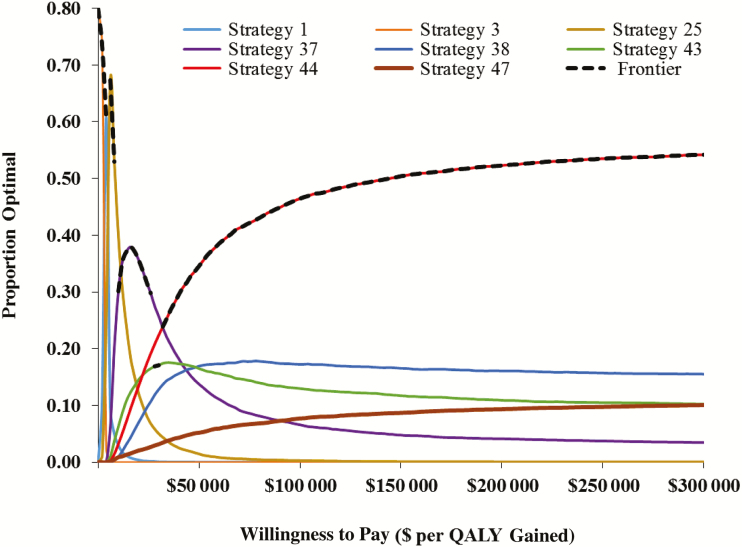Figure 4.
Cost-effectiveness acceptability curve for Clostridioides difficile infection (CDI) treatment strategies. Strategy 3 (orange) represents metronidazole for nonsevere initial CDI, and vancomycin for severe CDI and recurrent CDI. Strategy 37 (purple) represents vancomycin for all initial CDI and first recurrence, and fecal microbiota transplantation (FMT) for subsequent recurrence. Strategy 43 (green) represents vancomycin for initial CDI (nonsevere and severe), fidaxomicin for first recurrence, and FMT for subsequent recurrence. Strategy 44 (red) represents fidaxomicin for initial nonsevere CDI and first recurrence, vancomycin for initial severe CDI, and FMT for subsequent recurrence. Strategy 47 (brown) represents fidaxomicin for all initial CDI and first recurrence, and FMT for subsequent recurrence. The black dashed curve highlights the cost-effectiveness frontier, which is the optimal strategy on average across all probabilistic sensitivity analysis samples. Strategy 44 is on the cost-effectiveness frontier above a willingness-to-pay threshold of $30 000 per quality-adjusted life-year (QALY).

